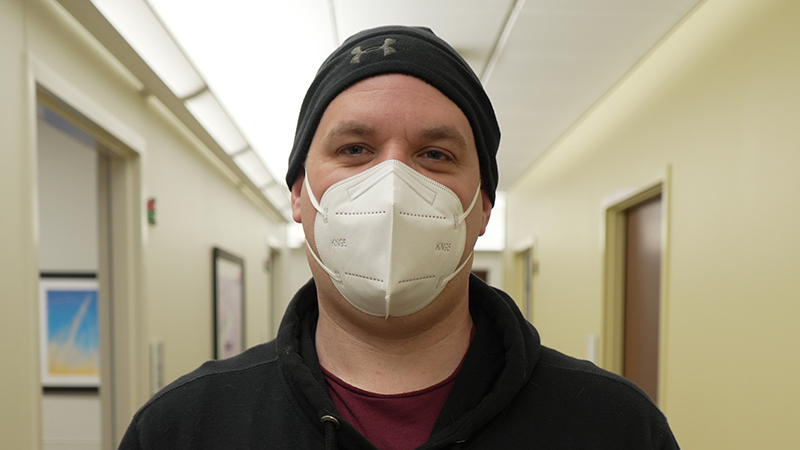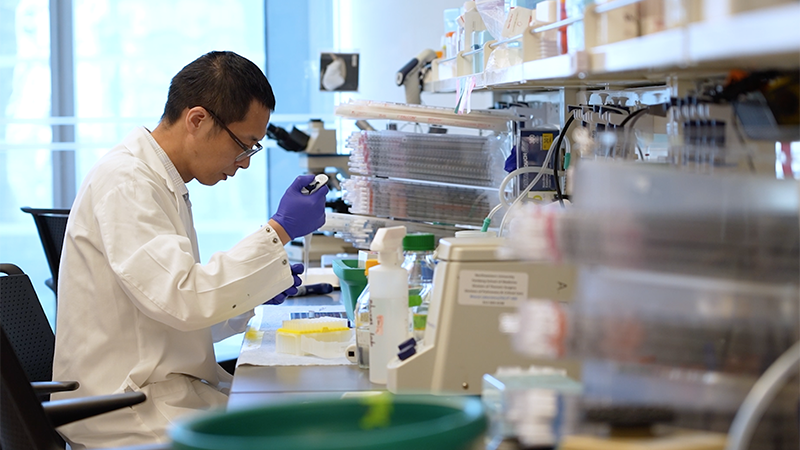Is This the Key to Controlling Lupus?
Northwestern Medicine Scientists Discover Driver of the Disease
Published July 2024
This article was originally published in the Northwestern University Feinberg School of Medicine News Center. It has been edited for the HealthBeat audience.
Systemic lupus erythematosus (SLE or lupus), a chronic autoimmune disease that causes inflammation and pain in your body, affects more than 1.5 million people in the United States. With lupus, your immune system, which is meant to fight infections, attacks its own healthy cells and tissues. Scientists at Northwestern Medicine have discovered an imbalance of a molecule in the blood that drives the harmful immune response in lupus. Restoring balance of this molecule in the blood may potentially cure the disease.
By identifying a cause for this disease, we have found a potential cure.— Jaehyuk Choi, MD, PhD
Until this study, the causes of lupus were unclear. The disease can cause life-threatening damage to your skin and joints as well as internal organs like your kidneys and heart. Existing treatments, which typically involve medication that stops your immune system from functioning (immunosuppression), can fail to control the disease and have an unintended side effect — reduction in the immune system’s ability to fight infections.
“Up until this point, most therapies for lupus are blunt instruments. It’s broad immunosuppression,” says study co-author Jaehyuk Choi, MD, PhD, a dermatologist at Northwestern Medicine, associate professor of Dermatology at Northwestern University Feinberg School of Medicine, and member of Robert H. Lurie Comprehensive Cancer Center at Northwestern Memorial Hospital. “By identifying a cause for this disease, we have found a potential cure that will not have the side effects of current therapies.”
Flipping Cells’ Identity
By studying patients with lupus, investigators found imbalanced chemicals in the blood that cause a rise of T-cells (a type of white blood cell that is part of the immune system), which promote the production of antibodies. By restoring balance of a molecule called Aryl hydrocarbon receptor (AhR) in patients' blood, Dr. Choi believes it is possible to reprogram disease-causing cells into benign tissue-repairing cells, potentially curing lupus. “It’s targeting the T-cells causing lupus and flipping their identity from bad to good,” he explains.
Dr. Choi and his colleagues next want to expand their efforts into developing new treatments for people with lupus.
Common Lupus Symptoms and Risk Factors
Everyone with lupus will experience it differently, but common symptoms include:
- Fever
- Fatigue
- Skin lesions and rashes on the face or body. A hallmark sign of lupus is a butterfly-shaped rash that appears on the cheeks and bridge of the nose. These lesions get worse in the sun.
- White or blue fingers and toes in cold conditions or stress
- Trouble breathing
- Chest pain
- Headache
- Dry eyes
- Confusion or memory loss
People with lupus typically have periods of time where symptoms worsen, called “flares” or “flare-ups.”
While anyone can develop lupus, some groups have a heightened risk:
- Younger women between the ages of 15 and 44
- People who are African American, Asian American, Hispanic, Latino, Native American or Pacific Islander
- People who have a relative with lupus or other autoimmune disease
Learn more about this breakthrough lupus discovery.







